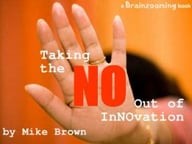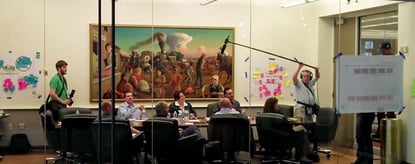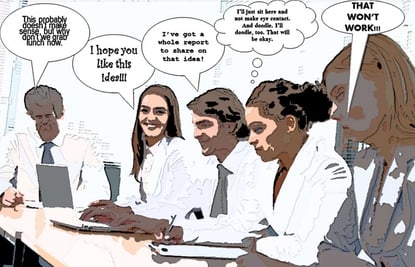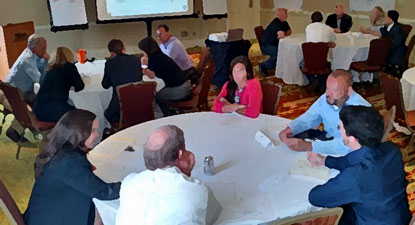Several reactions to the large event Google brainstorming session The Brainzooming Group designed and facilitated for Social Media Club of Kansas City expressed frustration at the participants involved (questioning if people with real-life experience were involved in the Google Fiber brainstorming session), the nature of some ideas (they weren't extreme enough), and the level of detail (insufficient action steps). You can see for yourself since we now have the report out videos from all the brainstorming groups posted on the SMCKC Gigabit City website.
From a distance, these are potentially reasonable challenges predicated on mistaken assumptions and experiences about what a brainstorming session is or will produce.
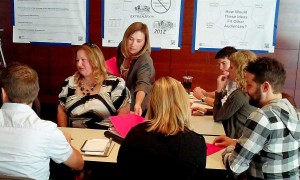 7 Things a Brainstorming Session Isn't
7 Things a Brainstorming Session Isn't
Rather than writing another piece on what brainstorming (or "Brainzooming," as we like to call it) is, here are seven things a brainstorming session ISN'T:
1. Able to accommodate everyone's participation - There's a point (around 10 people) at which the size of a group doing brainstorming starts to diminish results. Unless you're using multiple facilitators, you have to strive for as much participant diversity as possible while realizing not every potential perspective will be included. That's where pre-session input and post-session comments count.
2. Best done with a clean sheet of paper - Don't start brainstorming with a clean sheet of paper, no matter how many people "say" to do it. Brainstorming with a clean sheet of paper generates ideas too close to right now. Start with a sheet of paper filled with creative thinking exercises - questions and tools to stretch creative thinking.
3. Quiet time - Group brainstorming sessions are for thinking aloud. If a brainstorming session is working, participants are going to be voicing and sharing ideas actively. The key is to make sure someone's capturing ALL the ideas shared for later review.
4. A chance for a facilitator to push a personal agenda - A facilitator isn't at a brainstorming session to make sure a specific outcome results. A brainstorming facilitator should be asking probing questions, prompting all attendees to participate actively, and ensuring new ideas are freely shared without being immediately ruled out.
5. Going to automatically solve every aspect of a question - Just because you conduct a brainstorming session doesn't mean every issue will be addressed. Even though attempting to target and focus the subject matter with creative thinking exercises, a brainstorming session is just one input into a successful ideation process.
6. Always a special event - If you've been to brainstorming sessions, it usually feels like a big deal. My thinking when bringing people together for Brainzooming is to make sure it's productive and efficient, but also a very memorable event. If the only time you're pushing your creative thinking is at special events though, you're missing out. Make sure you have at least a few techniques you can use informally to brainstorm anytime you need new ideas.
7. A stopping point - Even though a brainstorming session concludes at some point, it's rarely the end of the work. After the brainstorming session, there will be ideas to review, evaluate, and select to pursue with specific implementation steps.
Wrap-up
If that's what a brainstorming session isn't, how do the brainstorming sessions you've been in compare? - Mike Brown
Download the free ebook, “Taking the NO Out of InNOvation” for help in better using creative thinking exercises! For an organizational boost, contact The Brainzooming Group to help your team be more successful by rapidly expanding strategic options and creating innovative plans to efficiently implement. Email us at brainzooming@gmail.com or call us at 816-509-5320 to learn how we can deliver these benefits for you.

